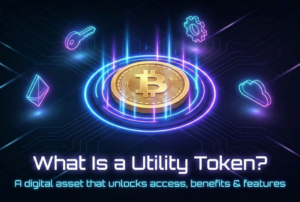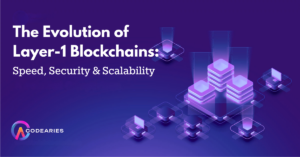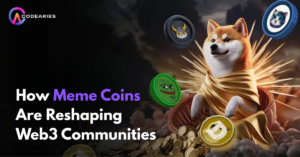As digital technologies continue to shape our lives, a new paradigm is emerging. This is Web3. For decades, we’ve been in the world of Web2, dominated by social media, cloud services, and large tech platforms. But what is Web3? How does it differ from Web2? And why is this shift important for everyday internet users and businesses?
This blog will help you understand the transition from Web2 to Web3, the main differences, key advantages and challenges, and what this change means for your digital future.
The Evolution of the Internet: Web1, Web2, and Web3
Before exploring the differences between Web2 and Web3, let’s look at the journey of the internet:
- Web1 (1990s–early 2000s):
The read-only era. Websites were static, information was published, and users passively browsed. - Web2 (early 2000s–present):
The read-write era. Social media, user-generated content, and interactive apps gave users the role of content creators. However, as participation grew, control became centralized among a few tech giants. - Web3 (emerging now):
The read-write-own era. Web3 uses blockchain and decentralized protocols, allowing users to own, govern, and monetize their data, identities, and digital assets.
What Defines Web2?
Web2 is marked by dynamic content, social connectivity, and massive scalability. It connected global communities, fueled startups, made e-commerce mainstream, and spurred countless innovations. However, it also has its drawbacks:
- Centralization:
Control sits with a handful of corporations—think Google, Facebook, Amazon, Apple, Microsoft. - Data Silos:
Each platform stores user data in its own servers. Users’ identities, social graphs, purchase history, and creations are fenced inside walled gardens. - Ad-Driven Monetization:
Free platforms profit primarily from harvesting and selling user data to advertisers. - Censorship and Control:
Platforms can silence users, change service rules unilaterally, or even delete accounts. - Permissions and Gatekeepers:
Access to features, APIs, and data often depends on business priorities and opaque policies.
Result:
While there is significant convenience and innovation, users face limitations in ownership, privacy, and autonomy.
What Is Web3? The Internet Owned by Users
Web3 aims to create an internet where users can own, transfer, and program value freely, with minimal gatekeeping. Its core elements include:
- Decentralization:
Data and power are spread across networks run by users rather than being held in corporate data centers. - Blockchain Technology:
Transparent, unchangeable ledgers store transactions, digital assets, and records across thousands of nodes. - User-Controlled Identity:
Instead of using “Sign in with Google,” users can use a wallet (like Metamask) to engage with websites and apps, independently holding their credentials and assets. - Programmable Assets & Smart Contracts:
Code that operates on its own governs transactions, agreements, and dApp logic without needing centralized intermediaries. - Community Governance:
Users can vote on decisions about upgrades and features through DAOs (Decentralized Autonomous Organizations), using tokens as their ballot. - Native Digital Value:
Tokens, NFTs, stablecoins, and other digital property forms are inherently supported and can be moved globally in an instant.
Key Differences: Web2 vs. Web3
| Feature | Web2 | Web3 |
| Ownership | Platform-owned data & content | User-owned data, assets, identity |
| Architecture | Centralized servers and services | Decentralized networks and blockchains |
| Identity | Platform-issued usernames, passwords | Blockchain wallets, self-sovereign identity |
| Monetization | Mostly ads, platform fees | Tokens, direct peer-to-peer payments, royalties |
| Governance | Company decisions, closed code | Community DAOs, open-source protocols |
| Censorship | Platform-controlled, easily censored | Resistant to censorship, transparent changes |
| Interoperability | Limited, walled gardens | Composable building blocks, interoperable protocols |
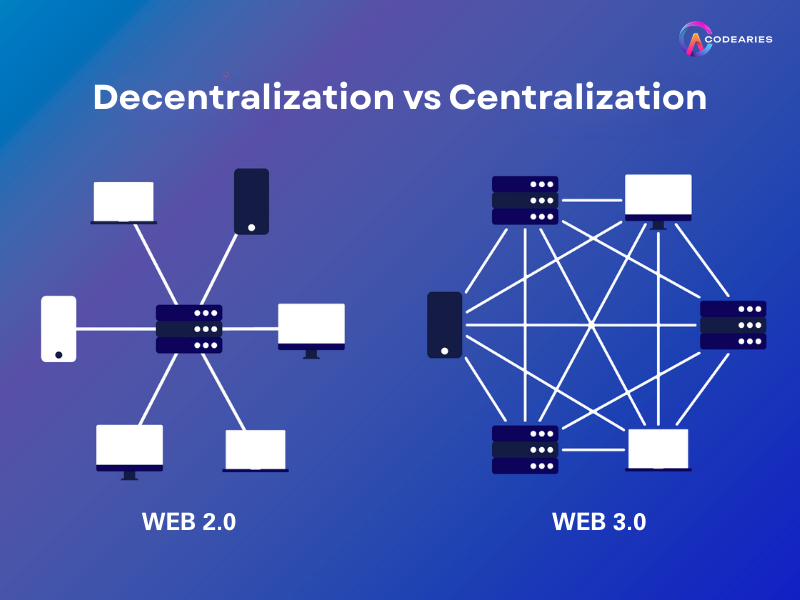
How Does Web3 Work in Practice?
1. Decentralized Applications (dApps)
dApps operate across multiple nodes rather than relying on a single company. Anyone can verify, audit, or copy the code.
2. Wallet-Based Access
A blockchain wallet serves as a universal passport for signing in, managing assets, and verifying credentials across different platforms.
3. Smart Contracts
Transactions and agreements are executed automatically through code. Escrow, royalties, trades, and memberships occur transparently without a central authority.
4. NFTs and Tokens
Digital assets like art, music, game items, real estate shares, and event tickets exist as tokens owned and managed by users, not platforms.
5. Community Governance
DAOs let users propose, discuss, and vote on everything from app features to community programs, with voting power determined by token ownership.
6. Cross-Platform Interoperability
Web3 standards allow profiles, items, and data to move easily between services and games.
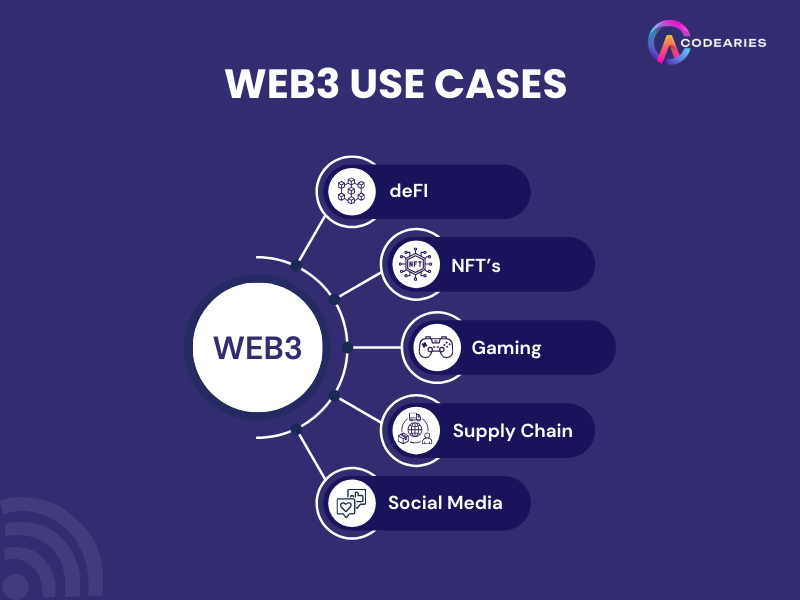
Web3 in the Real World: Use Cases
- DeFi (Decentralized Finance):
Borrow, save, and trade with clear rules without needing a bank (Aave, Uniswap). - Creator Economy:
Artists, writers, and influencers launch NFT projects, earning royalties directly from their peers and fans. - Decentralized Social Media:
Platforms like Lens Protocol, Farcaster, and Bluesky operate on open protocols where users control their content and connections. - Gaming:
In-game assets, whether earned or purchased, belong to the player and can be used across multiple games (Axie Infinity, The Sandbox). - Supply Chain:
Blockchain traceability confirms product origin, helping to combat fraud and unethical sourcing.
Challenges for Web3
Despite its potential, Web3 has hurdles:
- User Experience:
Wallets, tokens, and private keys are complicated for mainstream users. - Scalability:
Ethereum and other blockchains often become congested and costly, though Layer 2 solutions and new chains are addressing this issue. - Security:
Users must manage their own security, leaving them vulnerable to scams and phishing attacks. - Regulation:
Lawmakers are still catching up, with ongoing discussions on consumer protection, financial oversight, and liability. - Ecosystem Maturity:
Many dApps are still experimental, and standards are still forming.
Why Does This Shift Matter?
The transition from Web2 to Web3 is not merely technical; it is a rethinking of who controls, benefits, and participates in the global internet:
- More Agency:
Users retain more control over their identity, money, and creations. - Greater Monetization:
Creators and contributors can earn directly, rather than relying solely on ad revenue or platform fees. - Stronger Communities:
Fans, users, and creators collaborate via DAOs, sharing in governance and outcomes. - Resilience and Openness:
No single point of control means more resistance to censorship, downtime, or policy changes.
How Codearies Guides You Into the Web3 Era
At Codearies, we are committed to helping businesses, creators, and innovators transition from Web2 to Web3. Our expertise ensures your move to decentralized technologies is secure, scalable, and seamless.
What We Offer
- Custom Blockchain Development:
Build secure dApps, smart contracts, DeFi, NFT, and metaverse solutions tailored to your vision across various sectors, including healthcare, finance, real estate, crypto, AI, e-commerce, and more. - Web3 Integration for Web2 Businesses:
We integrate wallets, tokens, NFT features, and decentralized authentication into existing platforms to unlock new business models and user experiences. - Full-Stack Product Design (Web, Mobile, UI/UX):
Our team combines advanced blockchain infrastructure with appealing design across all devices and interfaces. - Strategy & Consulting:
We assist you in identifying opportunities, choosing the right protocols, ensuring compliance, and creating a go-to-market strategy for sustained adoption. - Security & Smart Contract Auditing:
We thoroughly review, test, and strengthen every line of code to ensure safety for your business and users. - Promotion & Growth:
From videos to digital marketing and app launches, Codearies supports your Web3 journey’s success.
Whether you’re new to decentralization or ready to fully embrace the next internet, Codearies is your partner for real results.
Frequently Asked Questions (FAQ)
Can Codearies help upgrade my existing Web2 app to Web3?
Yes! We specialize in smoothly integrating blockchain features like wallets, NFTs, tokens, and smart contracts into legacy web and mobile platforms, bridging the traditional and decentralized worlds for your audience.
Is Web3 only for crypto or finance companies?
Not at all. We have delivered Web3 and blockchain solutions for industries like healthcare, supply chain, real estate, e-commerce, booking systems, and AI-powered apps. The benefits apply across the board.
How does Codearies ensure security in Web3 projects?
We adhere to best practices for smart contract development and auditing, apply high standards for UI/UX, and conduct regular penetration tests to minimize vulnerabilities and protect your users and brand.
Will my users need to know how wallets or crypto work?
Not if you don’t want them to! We create user-friendly interfaces and onboarding processes, along with educational materials, so even non-technical users can enjoy Web3’s benefits without steep learning curves.
What ongoing support does Codearies provide after launch?
We offer full maintenance, feature updates, analytics, compliance updates, security monitoring, and customer support, ensuring your Web3 journey evolves alongside your users’ needs.


